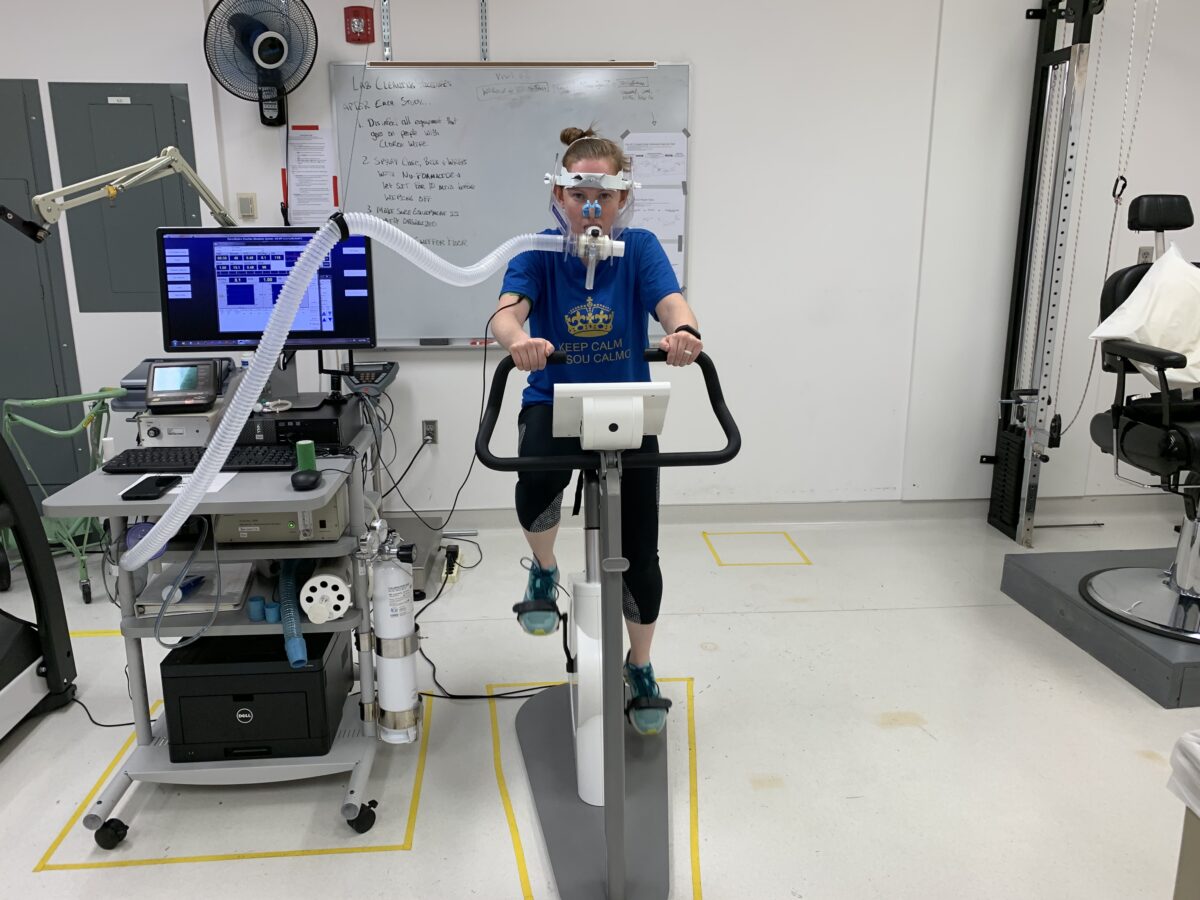BYU: Can you age out of exercise?

Courtesy BYU
Jessica Collins running an exercise bike test on a subject.
The sun blazed down on the sidewalk of Provo’s Center Street as community members pounded the pavement to the finish line. The marathon had started before the sun had even risen, and amongst the clumps of college students was an older gentleman dressed in bright yellow. He finished in under five hours.
While completing a 26.2-mile race is impressive at any age, stamina dramatically decreases as the decades of life accumulate. How did this grandfatherly figure finish before runners that were a quarter of his age?
“It’s all about sustainability,” BYU masters student Jessica Collins explains. She teamed up with Jayson Gifford, BYU Exercise Science professor, to figure out and quantify why endurance performance decreases with age.
In the body, there is a threshold — called the critical power or critical speed threshold — where the intensity of a workout becomes too much for the body, resulting in pain, fatigue and even sometimes injury. They discovered that the threshold, regardless of athletic ability and training, becomes lower and lower with age.
The average individual stops prioritizing exercise as work and family demands busy their schedules, but Collins and Gifford found that even master class athletes followed the same patterns. At age 30, an individual may successfully run marathons, but by the time they reach 60 or 70, walking up and down the stairs may be over their critical power threshold.

Courtesy BYU
Jessica Collins testing herself on the exercise bike.
“Even in the best possible scenario for aging, everything goes downhill,” Gifford explains.
For Collins’ master’s thesis, she wanted to test the boundaries of the critical power threshold. Participants aged 18 to 35, who weren’t currently endurance exercising, were brought in to train on bikes three times a week for eight weeks. Their critical power threshold was measured before and after the eight-week period. The training consisted of two types of exercise programs: moderate intensity continuous training (MICT) and high intensity interval training (HIIT). MICT is what the joggers around Provo are doing, getting exercise without overly exhausting themselves. HIIT consists of timed intervals of MICT alternated with faster or harder endurance exercise. For example, biking at a steady pace for a period of time, biking faster for a few minutes, and returning to the lower intensity to recover before repeating the cycle.
“We wanted to see which of these common programs improved the threshold more,” Collins said. “And we found that high intensity interval training actually almost doubled the increase in the critical power threshold.”
For individuals looking to increase their personal critical power thresholds, Collins recommends adding some HIIT to their workout — although you gain health benefits from any form of exercise. She suggests starting with current comfort levels, then work up the intensity a few times a week.
“There’s a lot on social media about exercise and diet,” Collins said. “And it’s not so black and white. There’s so much gray area, and there’s so much that we don’t know.”
- Jessica Collins running an exercise bike test on a subject.
- Jessica Collins testing herself on the exercise bike.


